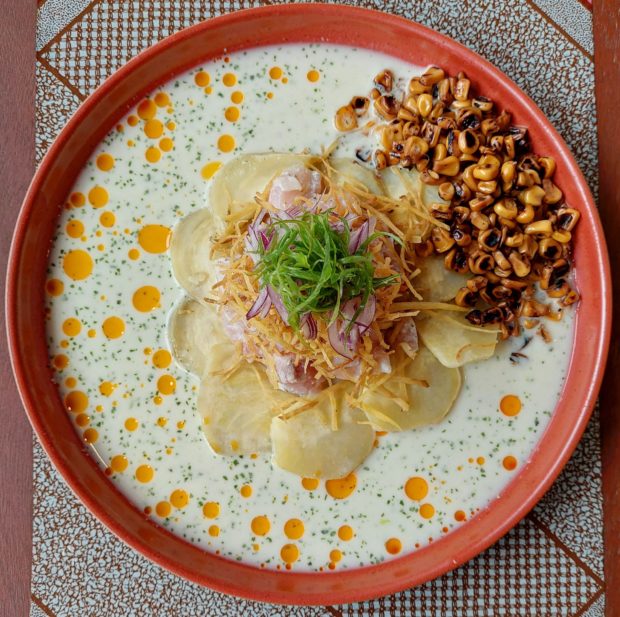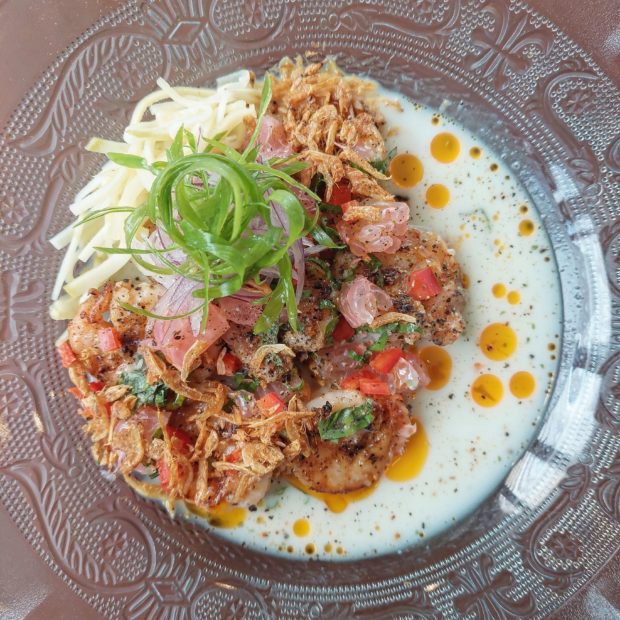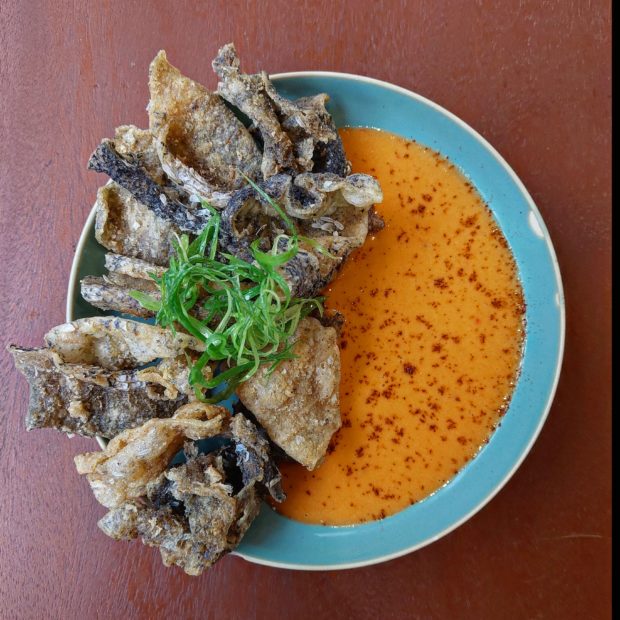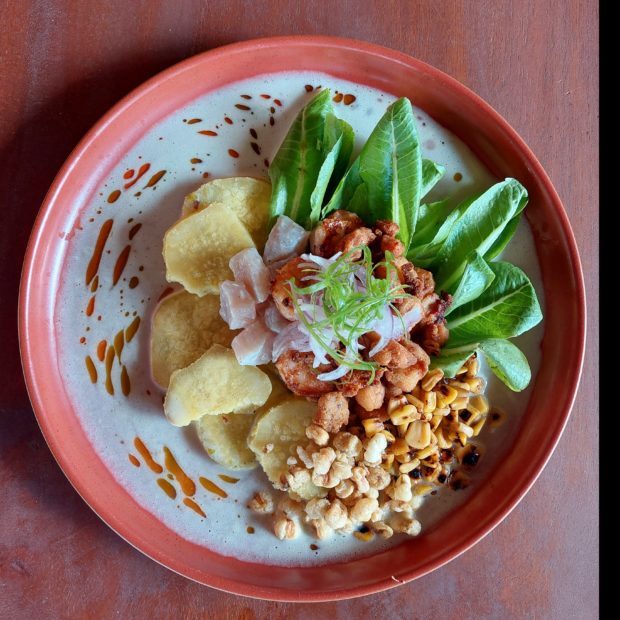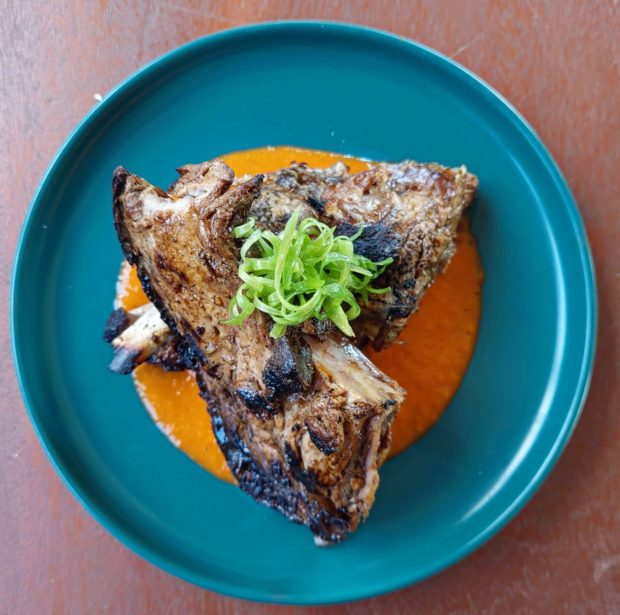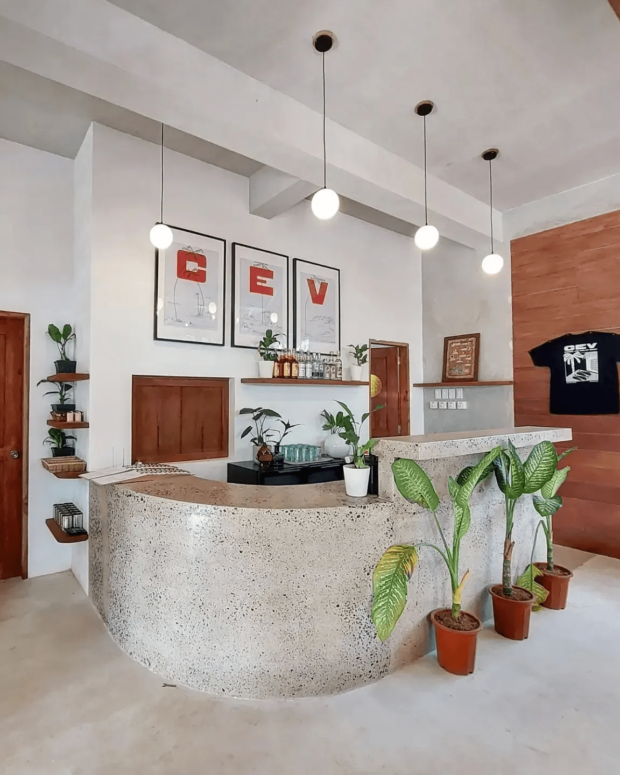
Following and achieving your dreams makes for a satisfying story but reality is often disappointing—with aspirations for greatness squashed by responsibilities, financial limitations, and sometimes even inadequacy.
For chef David del Rosario, having faced not only these but also the onslaught of the pandemic and Typhoon Odette, nothing will stand in the way of his dream and his restaurant, CEV: Ceviche & Kinilaw Shack. Roughly six years down the road, this rings truer than ever before as they’ve found a permanent home just beside Kudo Surf in Siargao.
Del Rosario attributes the concept behind the eatery to his personal love for the two similar dishes—the only difference being that the fish used in ceviche is prepared in lime juice, whereas vinegar is used in kinilaw. Beyond preference, he believes that kinilaw is an underappreciated dish that should be regarded as belonging to the same echelon as other Filipino staples.
“I feel like kinilaw could be viewed in the same light as adobo when talking about Filipino food. It is an excellent representation of the country itself because kinilaw highlights the freshness of our seafood, which is extremely abundant around the Philippines. But it also highlights one of our country’s most important and favorite ingredients, vinegar. I really feel that anyone who wants to try Filipino food for the first time has to try kinilaw.”
But with Siargao being a popular destination for thousands of tourists, he hopes to introduce the local dish to non-Filipinos through its more familiar version.
“I couldn’t just open a kinilaw restaurant because they wouldn’t really know what that was. So I thought about something very similar, ceviche, which would be bridging the gap for foreigners to try kinilaw out.”
One look at their menu and you will notice that some of the flavor combinations of their dishes are quite unique, even unconventional. Guyam, one of their kinilaw dishes, uses fish, grilled pork belly, coconut vinegar, roasted red bell pepper puree, pickled vegetables, cornick, lime, onions, and garlic rice.
On paper, pairing cornick with proteins and vinegar doesn’t seem like a match made in heaven but in reality, the dish is scrumptious—a turbulent marriage of flavors and textures where contrasting flavors complement and elevate each other. Del Rosario, upon looking back at what could have influenced his unorthodox take on ceviche and kinilaw, reveals his taste for khao soi, and that he initially planned to build a restaurant with the dish at its forefront.
“If you look at our dishes, they all have a crunchy component, a fresh component, a sour component, and a sweet component, and they all kind of mesh together just like you would in a khao soi.”
The ‘Pacifico’ and the ‘Santa Fe’
The perception surrounding kinilaw is that it is an appetizer. In your restaurant where it is the central focus, is it enough to be the main dish?
“I think that’s the main misconception about kinilaw, that you only think of it as a snack, an appetizer, or something that you eat before a main meal. If you look to the West, they have poke bowl establishments and ceviche restaurants. In New York, I interned at a place called Mission Ceviche and they just sold ceviche in a stall in the markets, and now they’re a Michelin-recommended restaurant. I didn’t see any reason why that wouldn’t work in a place like Siargao.”
What is your favorite item on your menu?
“Everything. My whole concept for the menu was: If you go into a restaurant and you see a lot of options, chances are some of those are good, while some suck. I wanted to open a restaurant with a focused menu where everything you would eat is different, but all of them are 10 out of 10—that’s why I only had six items in the beginning, all mains, nothing else.”
“But if you have to make me choose, on the kinilaw side, my favorite is the ‘Santa Fe,’ while on the ceviche, it’s something called the ‘Pacifico.’”
Fish Skin Chicharon, the ‘Daku’, and Grilled Panga (Fish Jaw)
What was the hardest part about leaving your previous job as a stockbroker?
“The hardest part was leaving a job I worked so hard to get to, and leaving it for something I had zero experience in. After 10 years in finance, the point I reached was a great personal accomplishment. Life was good, my finances were good, and my life was very comfortable. So leaving all of that was definitely tough, especially since I would be going into the restaurant industry that I knew nothing about.”
“All I knew was that I loved food, I loved to eat, and I loved to cook. And I wanted to grow this passion somehow and share it with everyone. There were many challenges along the way such as extreme lifestyle changes, leaving home, leaving people that meant a lot to you, and just diving into something completely unknown. I definitely have had the biggest and the most difficult struggles in my life over the past few years, but all of it is worth it because I knew what I loved and believed in what I loved.”
All of it is worth it because I knew what I loved and believed in what I loved.

How did you manage to stay afloat?
“Luckily, with my finance job, I was able to save enough money to help cushion the blow. I also did a lot of pop-ups and private dinners in Siargao during the pandemic to earn a few bucks here and there. But It’s a good thing the island picked up again recently, as my savings were almost gone after so much rebuilding after the pandemic and the typhoon. So it’s definitely a welcome sight to see tourists again. I don’t think I could have managed another year or two of no constant revenue if tourism didn’t bounce back.”
How is the island these days?
“The island is pretty good. I would say the number of tourists is still not the same as compared to 2018 or 2019, but there are definitely a lot more tourists again. It’s enough to make a lot of or all of the business owners here very happy.”
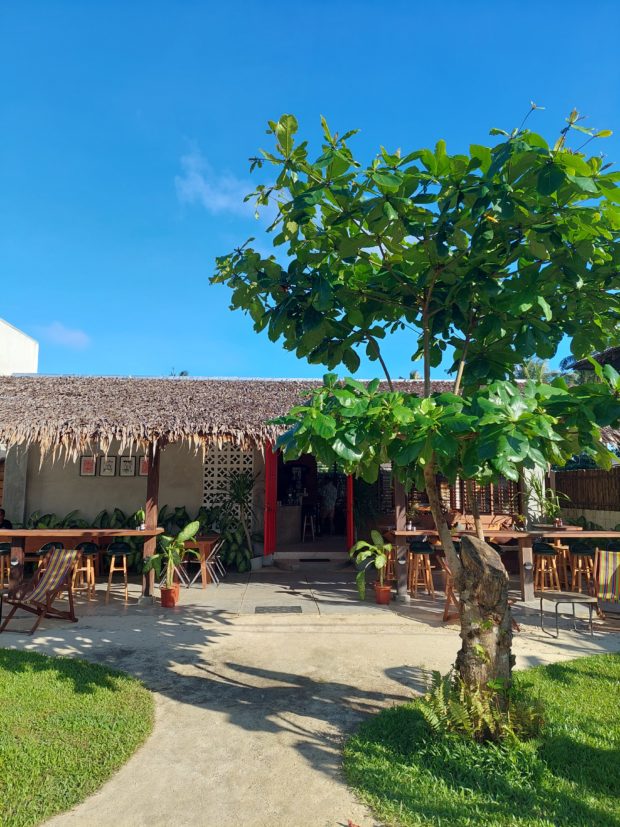
Can you tell me about your new permanent spot? How did you come upon it?
“It is beside a very popular surf shop, and it was their old staff house that they demolished. The owner is a friend and I asked him about renting his cafe, but he said that he had empty land beside that I might be interested in, and I said yes.”
“The initial business plan for CEV was that I would just be taking over existing infrastructures so that I wouldn’t shell out too much capital. But when you’re renting a place, you often think, ‘this window should have been here’ or ‘the drain should have been here.’ You can’t do anything about it anymore but now for this restaurant, everything is built the way I envisioned it to be. I’m very happy with how it turned out and this will be CEV for a very long time.”
I’m very happy with how it turned out and this will be CEV for a very long time.
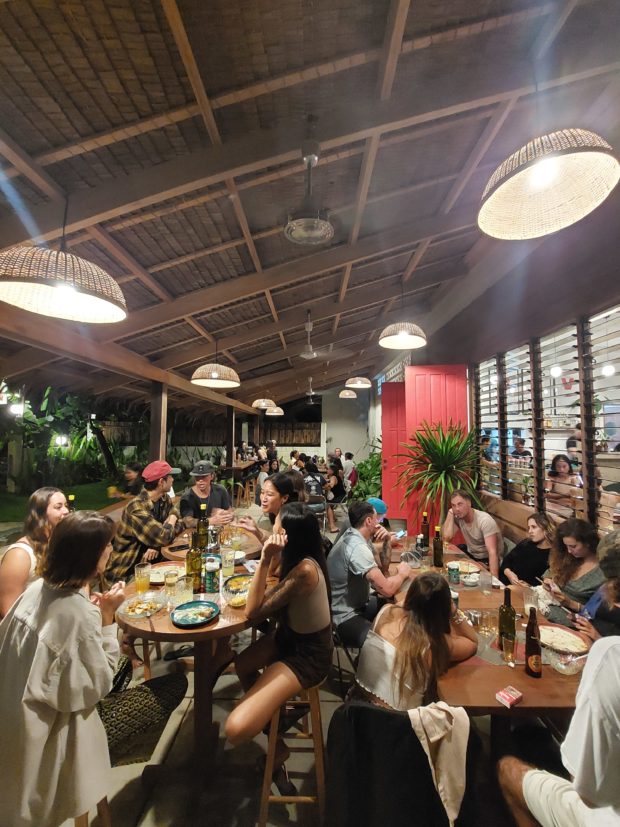
How does the space reflect CEV?
“It’s a reflection of my preferences, my old soul because the design is mid-century modern Filipino. In Siargao, if you look at the old houses here, primarily in Dapa, they were built around the ’50s, ’60s, and ’70s. There’s a lot of things from that area that I implemented in CEV because I’m pretty much obsessed with that design—I also love music from that era.”
“For me, in a restaurant, music is an important part of the whole experience. So the entire playlist of the restaurant consists of music from that time. It just evokes a feeling of nostalgia, when you look back on your lola and the happy times with her, going to her house—that’s what I want people to feel when they come to CEV.”
“And to tie it in with the whole island experience, we included a nipa roof, and the design is very much influenced by the houses around the area. So if you go in here, it’s like a mix of different things which is very much like CEV.”
It’s kind of like your food, it’s like a mix of things you don’t think would fit but they do.
“Yes. I never really had a plan for the design but I knew the feeling I wanted. So every item here, there was something that I felt—when it all came together it all blended well. My house is also like this—I built my house in Siargao and it’s the same—you feel like you’re entering a very cool lola’s house.”
Having gone through various spots before your current one, is there anything that you miss from when you were going from one place to another? Do you think you could point to a favorite previous spot for CEV?
“For sure, it’s the first spot at Loose Keys Moto Culture. It was probably the most fun I’ve ever had and the best two years of my life. It was just so fun living on the island, running a restaurant, and meeting all those people, and it was just a great experience growing the restaurant from day one.”
What are your goals for CEV this year?
“The goal for this year is to just stay open, to do what we do, to stay passionate, to stay creative, and to stay motivated and continue to express ourselves through food because that’s how the whole restaurant started. We just want to stay open because the last few years, we haven’t been. And because of the typhoon, it’s made me a lot more cautious nowadays because anything can happen now, like a storm from an earthquake to a tsunami, you never know. I’m just happy to stay open and to keep being open and to keep doing what we do and to share it with other people, and hopefully, they will appreciate it.”
I’m just happy to stay open and to keep being open
Especially looking at your story, is there any advice that you can give to people who feel forced to pursue work that’s away from where their passion is?
“It has to be a calculated risk. You can’t just jump into something blindly and hope for the best. The risk-taking has to be paired with a lot of preparation, a lot of hard work, and a lot of blood, sweat, and tears. People have to accept that, to roll with the punches, and to know when to adapt because you have to adapt to everything that’s thrown at you.”
“Stay passionate and remember what you love. For me, it was food at the time—that’s why I moved here to open a restaurant because it was something I loved: I love kinilaw, I love cooking, I love eating, and it’s something I wanted to share with everyone. I believed in it.”
“You have to find something that you love, and that will help you continue to persevere and stay grounded. But in a good way, it will also blind you from all the hardships that you go through—it would be like plowing through hardships because you’re so passionate and you love it so much that when you get hit, it doesn’t faze you.”
Images courtesy of CEV: Ceviche & Kinilaw Shack


